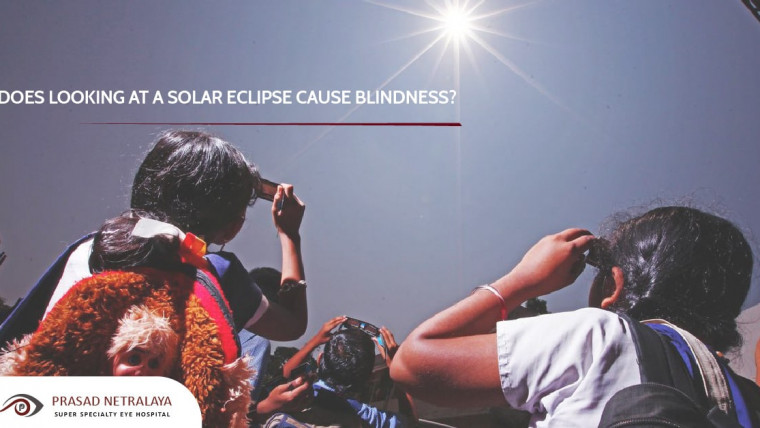Problems with your eyesight are usually one of three conditions — nearsightedness (myopia), farsightedness (hyperopia), or astigmatism.
While farsightedness and nearsightedness are more common of these three, astigmatism is known to occur alongside them.
If you feel like you suffer from one of these, this article will help you gain a strong understanding of these ailments to better prepare you for a doctor’s appointment.
We’ll go over the difference between myopia, hyperopia, and astigmatism and their causes and symptoms.
Table of Contents
What Is Nearsightedness (Myopia)?
Nearsightedness (myopia) is a vision condition where you close objects clearly but struggle with those farther away. It occurs when the shape of your eye causes light rays to bend in a way that focuses images in front of your retina instead of on your retina.
Causes of Nearsightedness
Our eyes aid our vision by transforming visible light into a picture. Light entering the eye passes through the cornea, iris, pupil, and finally, the back of the eye, where it is detected by the retina.
Light is transferred from the retina to the optic nerve, delivering impulses through the optic nerve to the brain.
In nearsightedness, light is focused on the fovea rather than the retina.
Eye shape issues are at the root of refractive problems. A too-rounded cornea or an abnormally lengthy eyeball might affect a person’s ability to focus on far away objects.
The American Refractive Surgery Council states that environmental factors, including the widespread use of digital devices like computers, smartphones, and e-readers, contribute to the rise in the prevalence of nearsightedness.
Symptoms of Nearsightedness
The primary sign of nearsightedness is difficulty focusing on faraway objects. For example, the inability to read road signs or see chalk on a whiteboard.
Also, think of the reading chart at the eye doctor. People with myopia struggle reading even the bigger letters.
You may experience the following symptoms as a result of constant focus on close objects.
- The need to squint when focusing on far-away objects.
- Headaches from eye strain.
- Vision problems when driving, especially at night.
Who Is Likely To Have Nearsightedness?
Children between the ages of 6 and 14 are most likely to have nearsightedness. Since children’s eyes change shape as they develop, myopia is typically diagnosed in younger children. Also, they’re more likely to have it if their parents are nearsighted.
The American Optometric Association reports that nearsightedness in adults can be brought on by factors such as visual stress or diseases like diabetes.
Pseudo-myopia is another term for nearsightedness that can affect people. This happens when the focusing muscles of the eyes are overworked.
Also Read : Common Eye Problems In Children & How To Prevent Them
What Is Farsightedness (Hyperopia)?
Farsightedness (hyperopia)is a vision problem where you can see distant objects clearly but struggle to focus on nearby objects. Like nearsightedness, farsightedness is the result of your eye shape.
Causes of Farsightedness
In farsightedness, light entering the eye is bent and focused onto the retina by the cornea and lens. The retina takes in the light and sends the signal through the optic nerve to the brain.
A flat cornea or abnormally small eyeballs are the usual causes of farsightedness.
Symptoms of Farsightedness
Farsighted individuals may struggle with the following:
- Eyestrain, even burning sensation in your eyes, and aching in and around the eyes.
- Headaches after working on the computer, reading, writing, drawing, or other activities that involve focusing on close objects.
- Blurriness when looking at nearby objects.
When farsightedness in children isn’t properly evaluated and treated, they risk developing strabismus (crossed eyes).
Most people with ADD or ADHD are more likely to be farsighted.
Regular eye exams (20/40 test) may identify those who are very farsighted, but they’re not as accurate when recognizing mild to moderate farsightedness. Routine eye exams are essential for young children who may be farsighted.
What Is Astigmatism of the Eye?
Astigmatism of the eye is a vision problem that changes the way light passes or refracts to your retina, leading to blurry, distorted, or fuzzy vision. The good news is that it’s generally treatable.
Causes of Astigmatism
When a person has astigmatism, their cornea or lens has an abnormal curvature. The uneven curvature causes a distortion in how light is refracted into the retina, similar to nearsightedness and farsightedness. After the brain receives information from the ocular nerve, the resulting visuals appear hazy.
Astigmatism is often hereditary, meaning you inherit it from your parents. It’s usually present from birth but can develop later in life. It can also occur as a result of your eyelids putting pressure on your cornea.
Astigmatism is also known to happen after eye trauma or correctional eye surgery.
Symptoms of Astigmatism
Here are some of the most common symptoms of astigmatism:
- Vision problems (especially at night)
- Eye strain or discomfort
- Blurred vision
- Headaches
Conclusion
The eye doesn’t ordinarily alter its shape on its own. Therefore conditions like nearsightedness and farsightedness require correction through glasses, contacts, or laser eye surgery. While corrective lenses like glasses and contacts can aid the eye’s ability to refract light properly, laser eye surgery can physically correct nearsightedness, farsightedness, and astigmatism.
If you’d like to know more about your eyesight or want to have your eyes examined, head over to our website or visit us in person and get your eyes checked and treated at Prasad Netralaya, the most trusted eye care hospital in Karnataka. Our experienced staff is here to ensure that you receive the quality ophthalmological care you deserve.
Dr. Vikram Jain, M.S. had his medical training (MBBS) from Kasturba Medical College, Mangalore, India. He did his master’s in Ophthalmic surgery from Kasturba Medical College, Manipal. He currently manages the Glaucoma department of Prasad Netralaya hospital.



